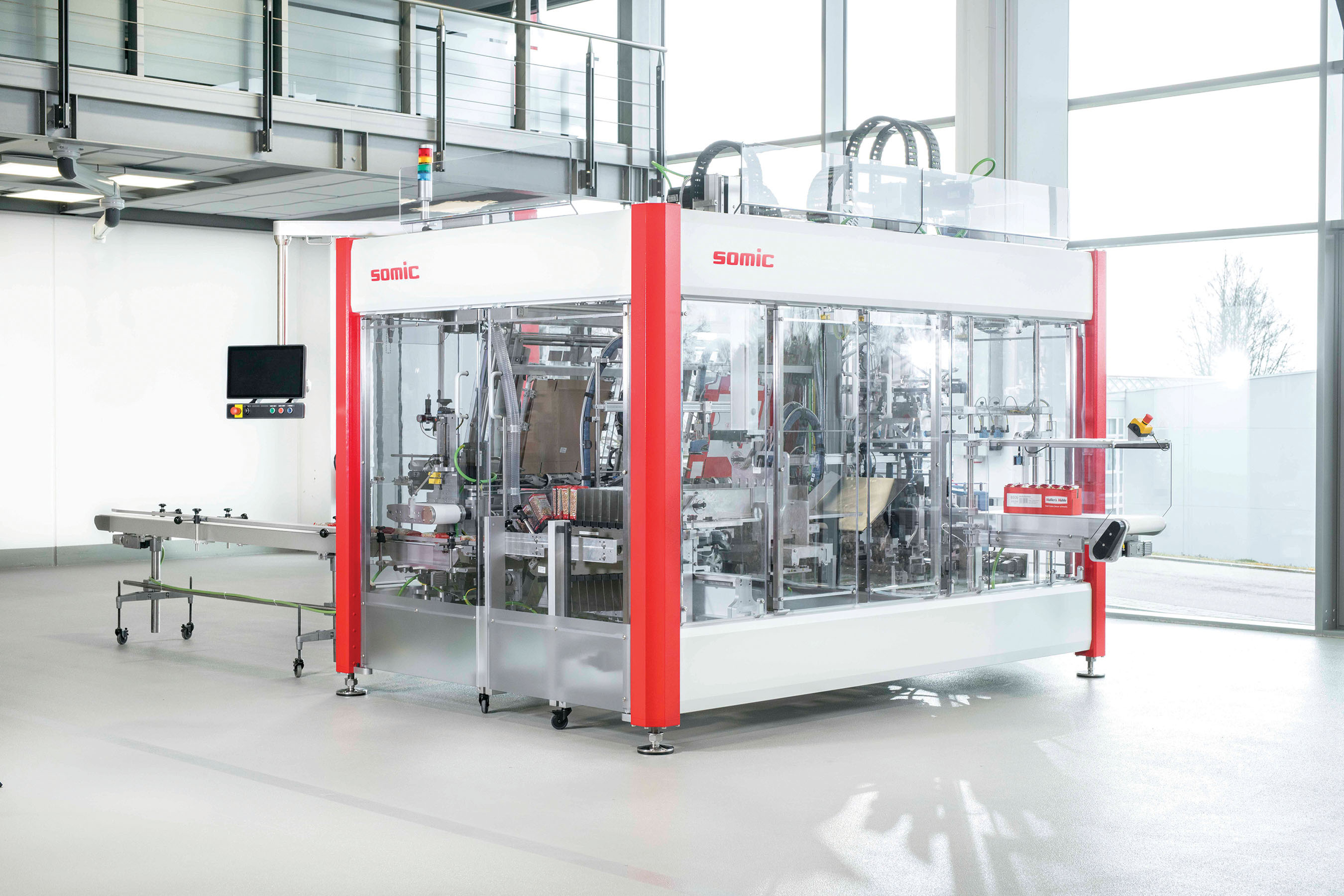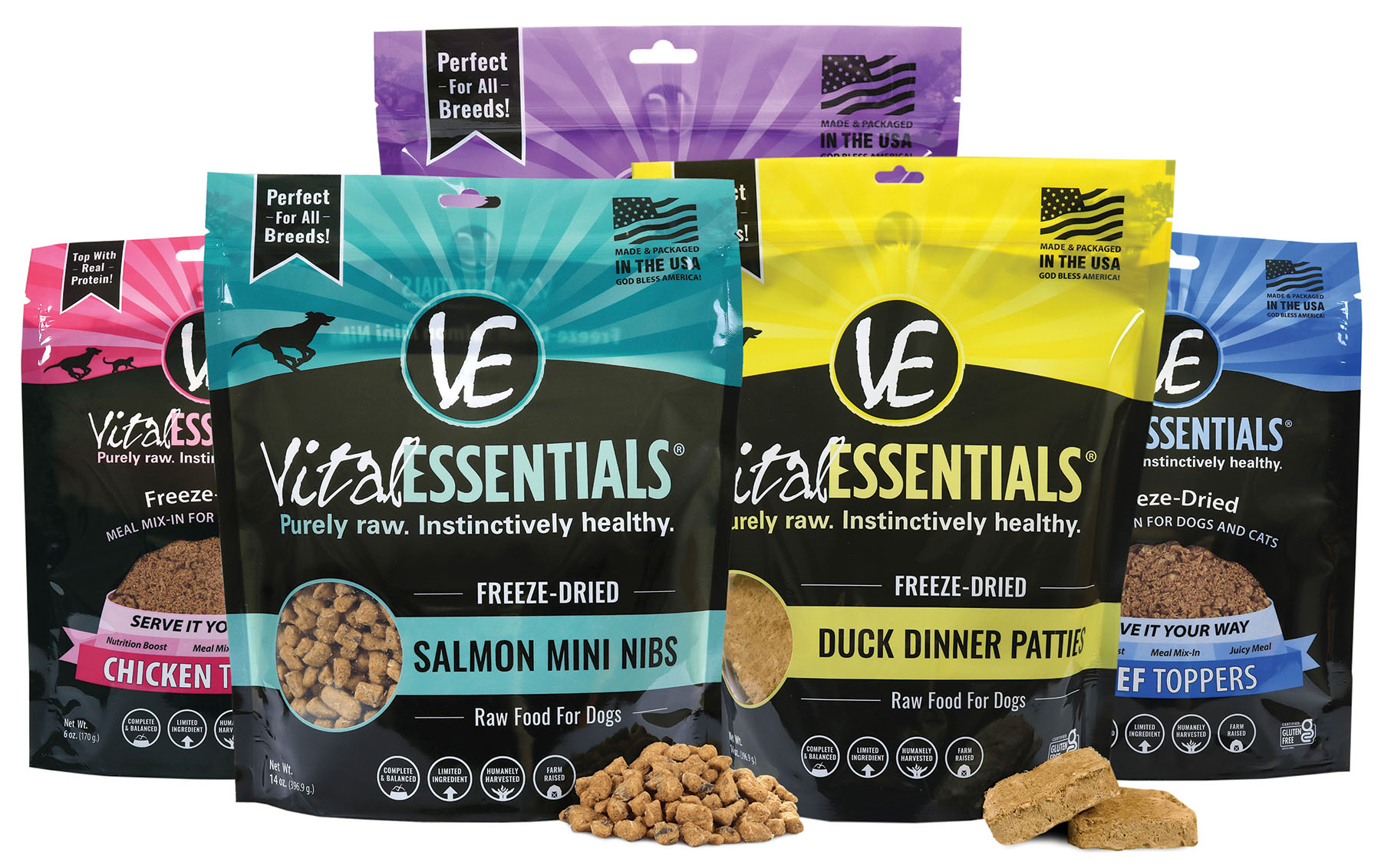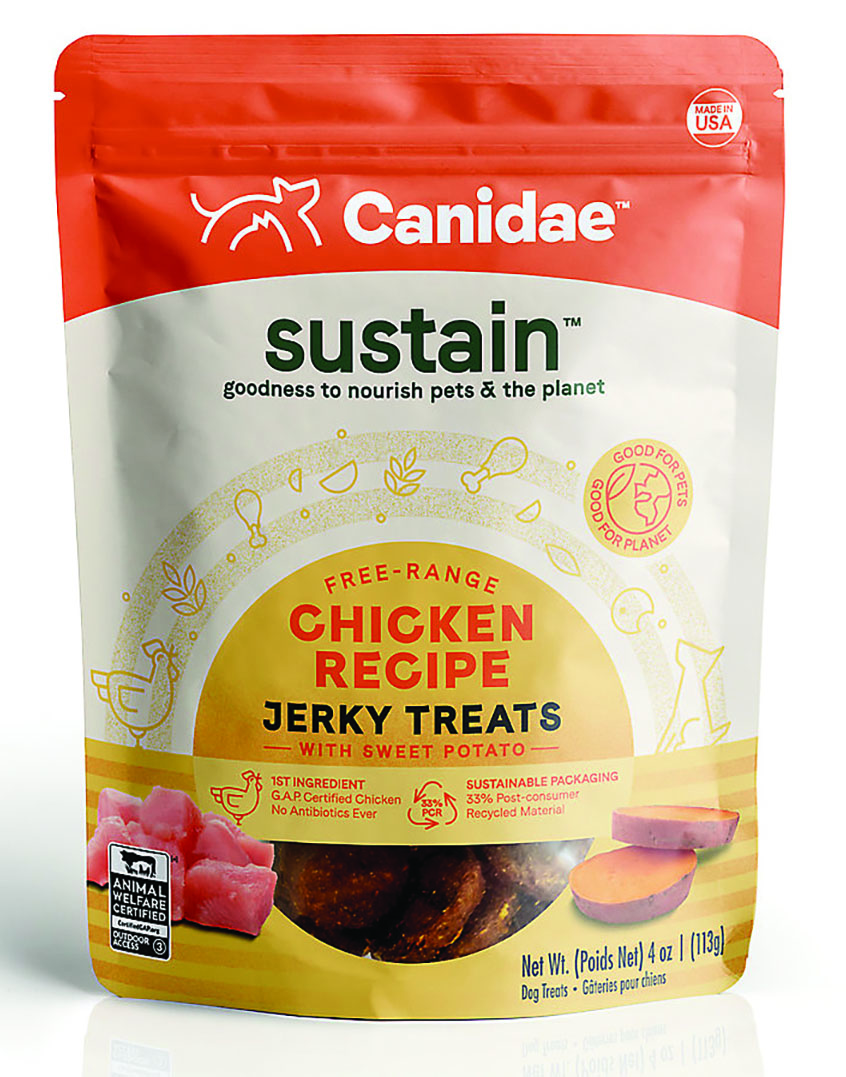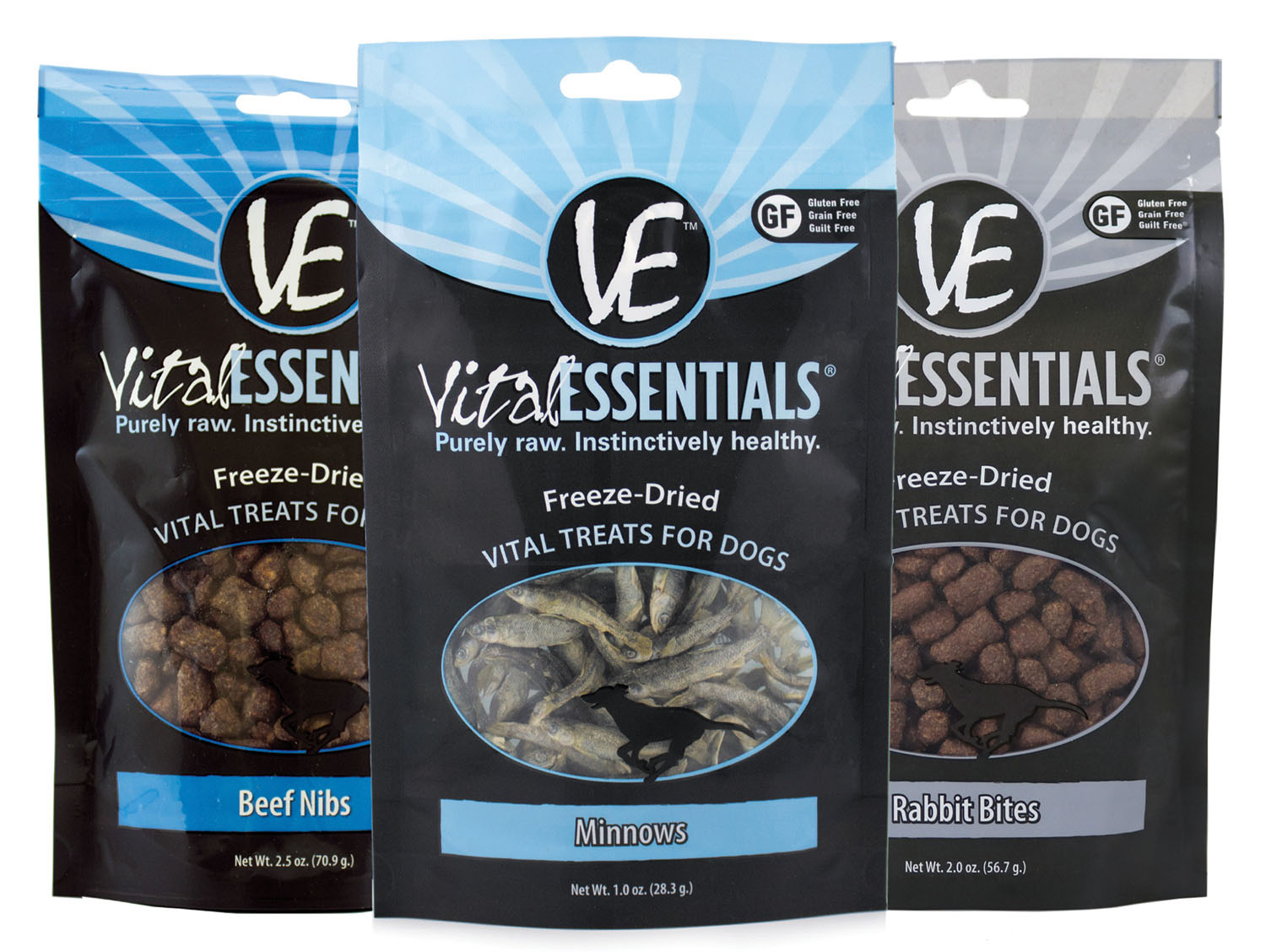This article was published in the June 2022 issue of Pet Food Processing. Read it and other articles from this issue in our June digital edition.
As the pet food and treat sector continues to expand, brands are looking for ways to gain a competitive edge. One way they are doing this is by investing in innovative packaging designs that meet the needs and expectations of today’s pet owners.
Quality and convenience
Consumers are increasingly seeking out premium products for their pets, and brands are responding with packaging designs that convey a sense of luxury and quality. This can be achieved in a variety of ways, including using specific messaging and emulating the packaging of high-end human food products.
“As pet parents become more discerning, they increasingly look for quality products that meet certain benchmarks,” said Melissa Olson, vice president of sales and marketing, Vital Essentials, Bellevue, Wis. “The packaging of pet food and treats can be used to indicate that the product is premium or high-quality through subtle signals such as the color black, engaging fonts, and references to the certifications or buzzwords that pet parents are looking for (such as ‘organic’, ‘gluten-free’, or ‘natural’).”
With an increasing number of pet owners willing to pay more for premium pet food and treats, investing in packaging that communicates this message to consumers is an effective way to stand out in the marketplace and boost sales.
 The SOMIC 424 Tray Packer allows manufacturers to have flexibility when developing packaging solutions. (Source: SOMIC Packaging)
The SOMIC 424 Tray Packer allows manufacturers to have flexibility when developing packaging solutions. (Source: SOMIC Packaging)
“Standing out on the store shelf as a premium, ‘look at me’ package is the biggest unrealized marketing advantage available to the pet food market today,” said Peter Fox, chief executive officer, SOMIC Packaging, Inc., Eagan, Minn. “The cost of this marketing approach is dwarfed by any other strategy. Oddly enough, it is the most effective.”
Aside from using specific design elements to convey a sense of luxury, brands are also opting for packaging that’s more functional and user friendly. Features like handles, resealability and portion control are becoming increasingly commonplace as consumers look for products that make their lives easier.
“In this market, standing out on the shelf is more competitive than ever, as many brands continue to enter the premium pet food space,” said Diana Courtepatte, director of marketing, TC Transcontinental Packaging, Montreal. “To differentiate from competing products, brands should enhance their packaging with convenience features such as handles and stay-fresh zippers.”
Sustainable solutions
Sustainability is also a key concern for many pet owners, and brands are responding with eco-friendly packaging solutions that include compostable, recyclable and reusable packaging materials.
“Sustainability is by far the biggest trend we are seeing in packaging,” said Melissa Bauer, director of strategic initiatives and sustainability, Pet Sustainability Coalition, Longmont, Colo. “In the US, there is a large movement toward recyclable packaging, as well as exploring refillable/bulk packaging options. In Europe, there is momentum looking at packaging options with lower environmental impact, such as bags with fiber and paper options. We also see brands putting resources into forward-facing packaging commitments, such as committing to 100% refillable, recyclable, and/or compostable packaging by the year 2025.”
“Consumer awareness and interest in ethical and environmental pet food choices is set to grow as more pet owners become interested in green choices,” Courtepatte added. “Seventy-seven percent of pet owners ages 35 to 54 believe that pet food packaging should be easier to recycle. We have seen the growth in demand for sustainability and, as this demand heightens, it is important to educate the consumer. As the demand for sustainable packaging has increased there are many new materials that are sustainable while also maintaining the functionality, freshness and equipment performance that packaging provides. New materials and innovations to meet this need include recycle-ready films and laminations that include post-consumer recycled content.”
“Sustainability is by far the biggest trend we are seeing in packaging,” said Melissa Bauer, director of strategic initiatives and sustainability of Pet Sustainability Coalition.
Canidae, a brand that specializes in vet-formulated dog and cat food, has made sustainability a priority in its packaging. From bags made with post-consumer recycled material to innovative kibble refill stations, the company has made a commitment to reducing its environmental impact.
“Our kibble and treat bags are made with 40% post-consumer recycled material — the most in the industry. In fact, each of our 18-lb bags reuses materials from four plastic bottles,” explained Bret Furio, chief executive officer, Canidae Pet Food, Stamford, Conn. “But one of the latest trends in pet food packaging — and one we’re proudly on the forefront of — is no packaging at all. We just launched our Kibble Refill Stations, which are first-of-their-kind devices that allow pet parents to buy kibble from our Sustain and Pure lines in bulk by filling reusable bags. We estimate that this device will save 500,000 pet food bags from landfills by 2030.”
New technologies and materials
As pet food packaging becomes more sophisticated, brands are experimenting with new technologies and materials to create packaging that’s more eye-catching, sustainable and user-friendly. This has resulted in new packaging shapes and finishes, improved sustainable materials, and more.
 The color black is often used on packaging to depict higher-end pet food or treat brands. (Source: Vital Essentials)
The color black is often used on packaging to depict higher-end pet food or treat brands. (Source: Vital Essentials)
“Recent innovations in the field of pet food packaging include the development of sustainable films and recyclable packaging, as well as more tactile packaging, with surface finishes ranging from high gloss to a soft velvety texture,” Olson said. “Increasing customizability and brand experience with different resealable features has also been a priority for many brands, with different shapes and styles of plastic packaging being recently designed toward this goal. At Vital Essentials, we have been industry leaders in many pet food packaging innovations, including the development of clear viewing windows and stand-up frozen food packages.”
“Recyclable packaging has made great strides, especially in the last 12 to 24 months, becoming more viable for large-bag formats and cost-competitive with non-recyclable packaging for the first time,” Bauer added. “Most excitingly, we’re starting to see flexible, recyclable packaging with recycled content come onto the market for the first time in the last year and we hope to start to see this kind of packaging, especially in smaller formats, come onto the market in a big way soon.”
With the move toward sustainability, there has been an increased focus on using more natural and compostable materials in pet food packaging. This has presented a challenge for pet food brands, as they strive to develop materials that are both sustainable and functional.
 Kibble and treat bags from Canidae are made from 40% post-consumer recycled material. (Source: Canidae)
Kibble and treat bags from Canidae are made from 40% post-consumer recycled material. (Source: Canidae)
"As far as new materials go, the majority of recent efforts have been toward innovating recyclable-ready films and biodegradable packaging,” Olson explained. “This move to find materials that are compostable and sustainable inevitably results in a creative struggle to balance the recyclability of packaging versus supply chain requirements for long shelf life. Multilayer packaging keeps the products fresher for longer but can be difficult to recycle. However, if the priority is on optimum recyclability, the shelf life is very short. The most extreme example would be fresh meat from a butcher, wrapped in brown paper — completely recyclable, but not usable for shipping purposes.”
Packaging and purchasing decisions
With so many pet food and treat options to choose from, packaging has become an important factor in the purchasing decisions of pet owners. As a result, brands are investing more time and resources into developing packaging that will stand out on store shelves.
“Pet owners also want to buy products that are easy to use. If they have a bad experience with a package, they will likely not buy it again,” said Julian Stauffer, chief executive officer of Waldner North America.
“It is said that it takes a consumer 20 seconds to scan a shelf and determine which package they will reach for,” Courtepatte said. “When you think about it, that’s a pretty big task that packaging needs to fill effectively. Graphics play an important part in pet food packaging. At retail, a product must stand out on the shelf and catch the eye of the consumer, while also having the appropriate use of color to facilitate brand recognition and communicate the product’s attributes.”
“The use of images, colors and fonts to create an eye-catching finish drives shelf appeal and clearly distinguishes one brand from another,” Olson added. “One way to stand out visually is to print packaging with more infographics and less copy. Pet food brands strive to strike the balance between providing helpful information pet parents want versus overwhelming busy, time-constrained customers with blocks of text. Infographics can be an excellent way to convey key points in a way that’s easy to understand quickly. Badges and symbols are particularly useful to highlight certifications and features such as ‘gluten-free,’ ‘USA-made,’ and so forth.”
 Successful packaging often features important information for the shopper, including callouts such as “gluten free” and “grain free.” (Source: Vital Essentials)
Successful packaging often features important information for the shopper, including callouts such as “gluten free” and “grain free.” (Source: Vital Essentials)
It’s vital for brands to clearly communicate the environmental benefits of their packaging. As sustainability becomes more important to consumers, they are increasingly looking for brands that share their values.
“PSC members DOW and Mondi recently put out a report that showed about 75% of consumers say they would feel more favorably toward a brand that made its packaging more sustainable,” Bauer said. “In today’s hyper-competitive market in the pet industry, especially in the premium and super-premium categories, sustainable packaging might be the edge that causes pet owners to switch from one brand to another.”
Ultimately, the goal is to develop packaging that’s both functional and appealing to consumers. Without both these elements, it’s not only difficult for brands to compete, but also to keep customers coming back for more.
“The pet food aisle is full of new packaging, which makes it challenging to stand out,” said Julian Stauffer, chief executive officer, Waldner North America, Wichita, Kan. “Brands that are focused on the human’s emotions toward their pet’s health and wellness are going to do well. Pet owners also want to buy products that are easy to use. If they have a bad experience with a package, they will likely not buy it again.”
Read more about packaging solutions and trends for pet food and treats.




